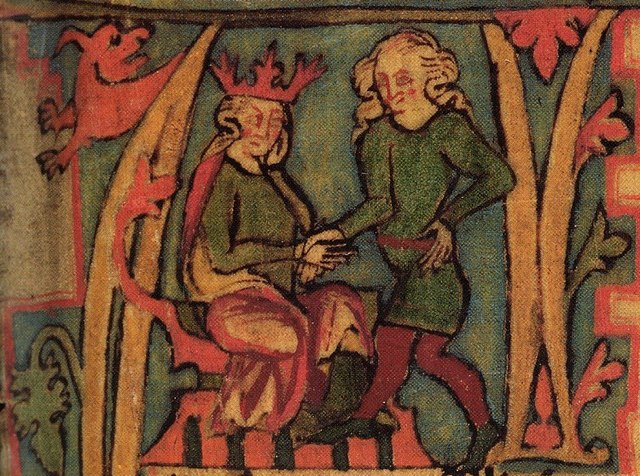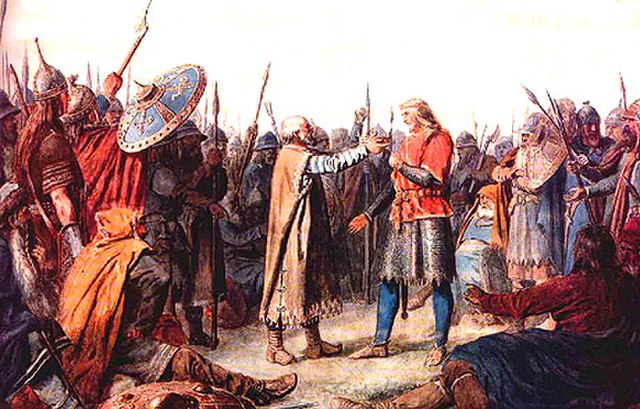The Bishop of Orkney was the ecclesiastical head of the Diocese of Orkney, one of thirteen medieval bishoprics of Scotland. It included both Orkney and Shetland. It was based for almost all of its history at St Magnus Cathedral, Kirkwall.
The Romanesque interior of St Magnus Cathedral, the seat of the bishops of Orkney
Orkney, also known as the Orkney Islands, is an archipelago in the Northern Isles of Scotland, situated off the north coast of the island of Great Britain. Orkney is 10 miles (16 km) north of the coast of Caithness and has about 70 islands, of which 20 are inhabited. The largest island, the Mainland, has an area of 523 square kilometres (202 sq mi), making it the sixth-largest Scottish island and the tenth-largest island in the British Isles. Orkney's largest settlement, and also its administrative centre, is Kirkwall.
Ring of Brodgar, on the island of Mainland, Orkney
Midhowe Broch on the west coast of Rousay
According to the Orkneyinga Saga, Harald Fairhair (on the right, with fair hair) took control of Orkney in 875. He is shown here inheriting his kingdom from his father Halfdan the Black, in an illustration from the Flateyjarbók.
Artist's conception of King Olaf Tryggvason of Norway, who forcibly Christianised Orkney. Painting by Peter Nicolai Arbo.





